A team in Japan has succeeded in developing self-growing materials that respond to mechanical stress by regenerating themselves like human muscle tissue. The team placed a double-network polymer hydrogel in a supply of monomers. When the network in the hydrogel was fractured under stress, the monomers bonded with the broken ends of the existing polymers to form new network material.
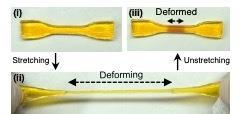
A hydrogel is a solid, jelly-like material composed of long polymer chains. A double-network hydrogel is a cross-woven structure of polymers with opposing properties, one set rigid and brittle and the other soft and stretchy. When the hydrogel is subjected to mechanical stress, the brittle network strands break and attract monomers to heal them, while the stretchy ones maintain the structural integrity of the gel.
‘The key to make the strategy successful is how to bridge the gap between the molecular mechanism of mechanochemistry and material science,’ says team member Jian Ping Gong from Hokkaido University. It is well-known, she says, that a broken polymer chain generates mechanoradicals, free radicals that trigger a chemical reaction. These mechanoradicals attract monomers to initiate new polymerisation. But doing this in practice is challenging. The team overcame this difficulty by using double-network hydrogels, which generate more mechanoradicals than conventional polymer gels.
The team’s approach may well change our perceptions of synthetic materials as essentially ’dead’, says Ping. And it is set to open up new avenues to develop active, self-adaptive and reprogrammable materials. This could have practical applications for fatigue-free materials, such as tyres, as well as for self-growing and adaptive soft robots. But researchers will first need to find a way of providing such materials with a sustained supply of monomers.
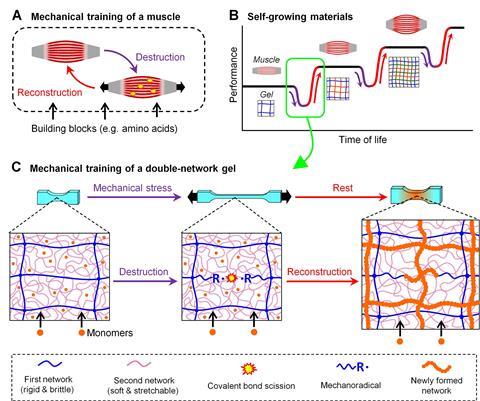
Rint Sijbesma, whose research at the Eindhoven University of Technology in the Netherlands involves smart polymers, says that the team’s success is ‘very significant, because it shows that mechanically initiated polymerisation can lead to a useful change in mechanical properties.’ Previous work on mechanochemical strengthening was based on more complex reactions, he explains, and did not show the well-defined increase in polymerisation that is exhibited in the double-network approach.
The Japanese team is now looking to develop new self-growing materials based on this approach. They hope that, by using a range of monomers and network materials, they can generate materials that will change structure and demonstrate new properties and functions over time, just like a living biological system.
References
T Matsuda et al,Science, 2019, DOI: 10.1126/science.aau9533





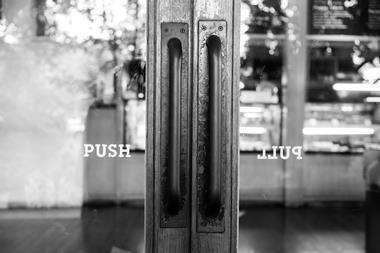

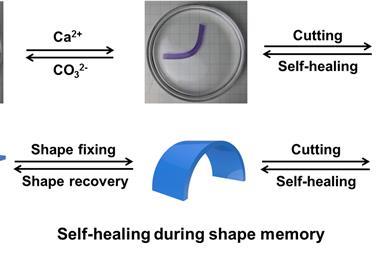
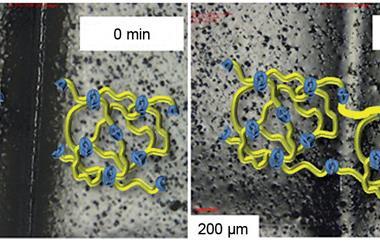
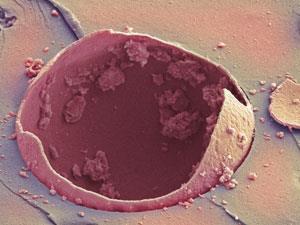












No comments yet